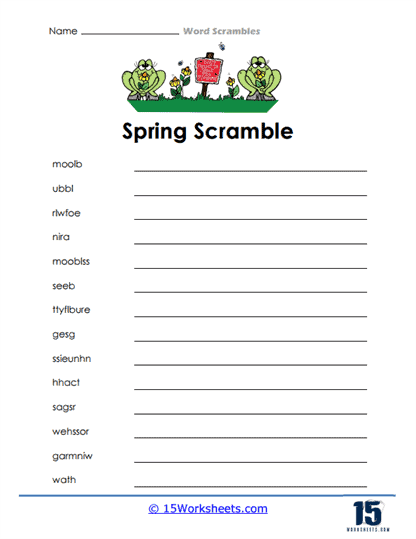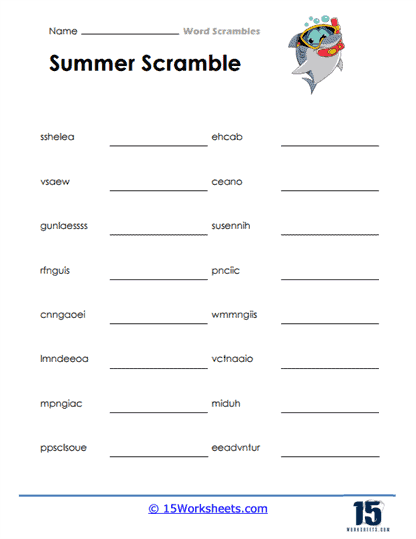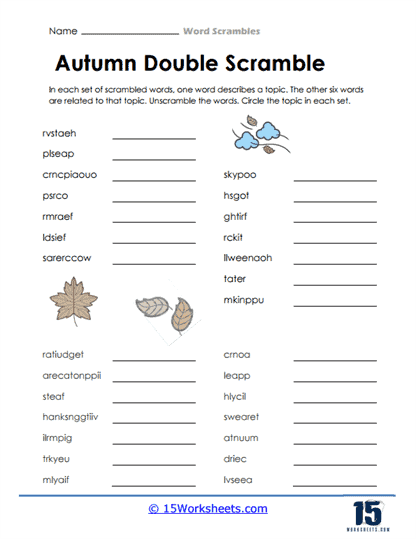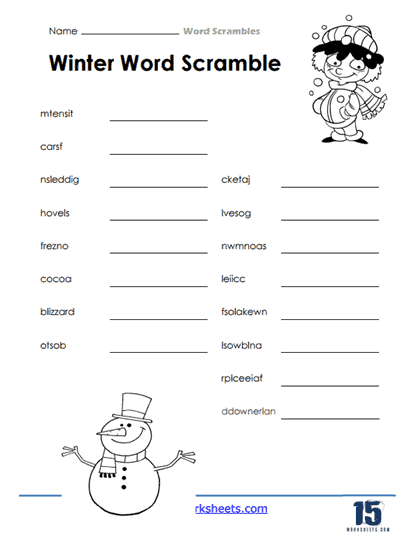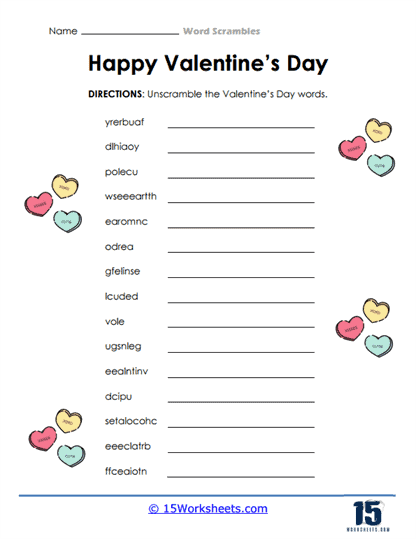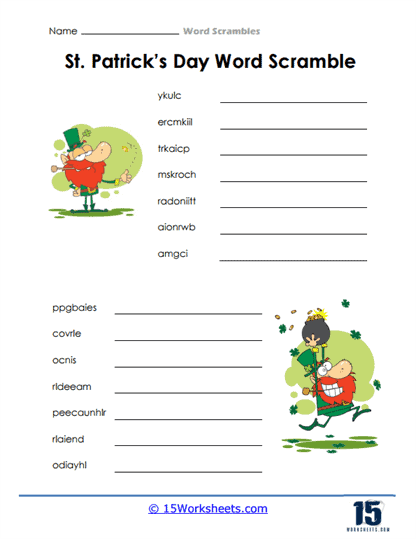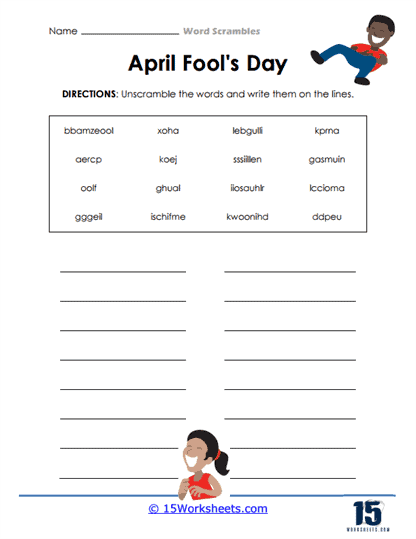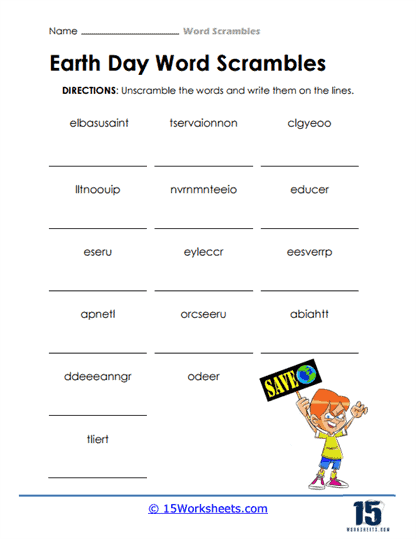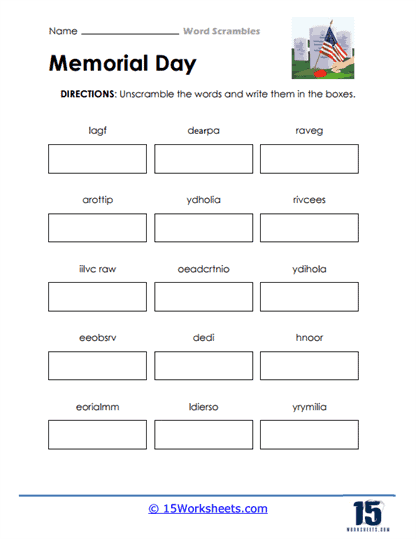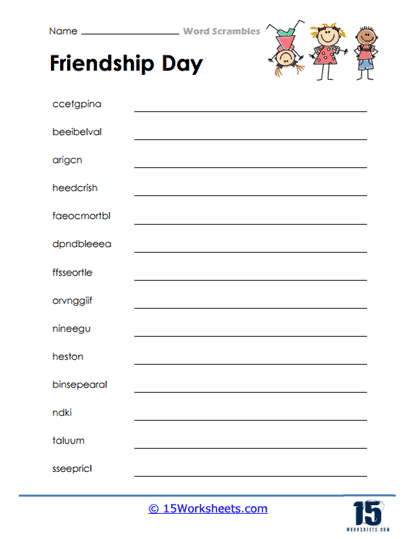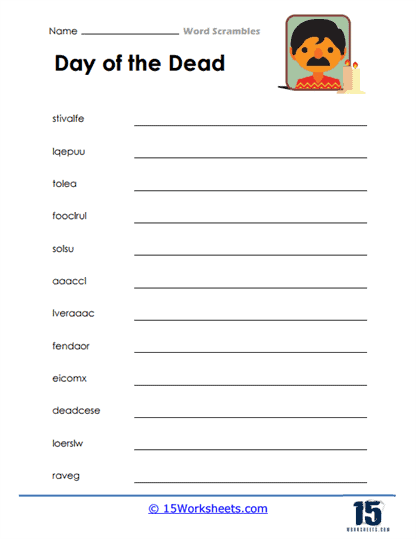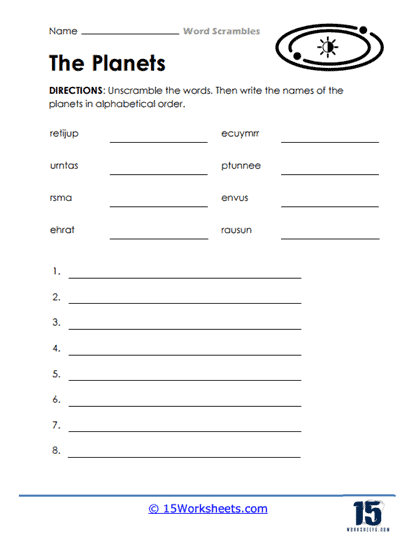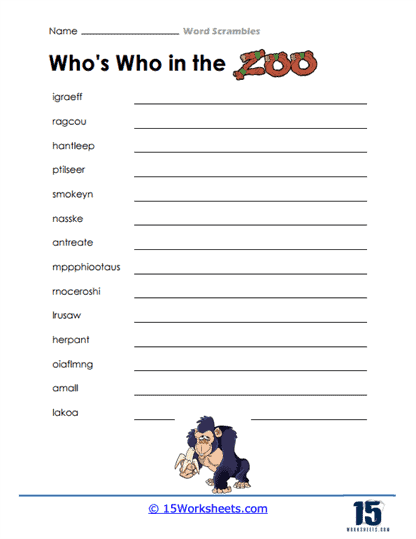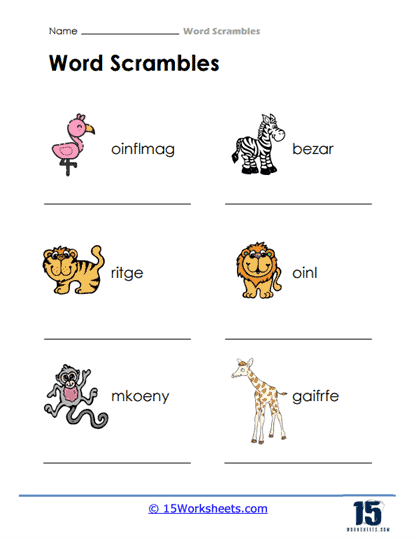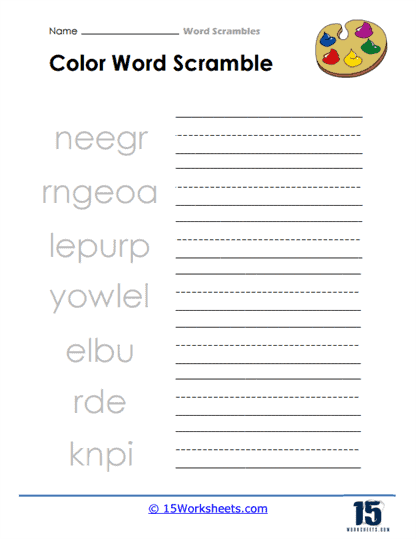Word Scrambles Worksheets
All About These 15 Worksheets
This collection of word scramble worksheets presents a fun and educational way to enhance various linguistic and cognitive skills among students. These worksheets span different seasons and holidays, offering thematic word scrambles that challenge students to rearrange letters to form words that relate to the themes. The variations in topics not only make the activity engaging but also stimulate the learners’ ability to think in a context-driven manner. Let’s explore the educational benefits these worksheets offer.
First and foremost, these worksheets sharpen spelling skills. By unscrambling letters to form words, students are reinforcing their ability to recognize correct spellings. When presented with jumbled letters, students must mentally go through different combinations and permutations of letters until they find a word that fits the theme and makes sense. This exercise is a direct way of improving their understanding of word formation and phonetic patterns in the English language.
The word scrambles also enhance vocabulary acquisition. Each worksheet likely includes words specific to the theme it follows, whether it’s a season, holiday, or special event. Students are exposed to words they may not use in everyday language, such as those specific to spring, summer, or winter activities. This expansion of vocabulary is crucial for language development, especially in younger learners, as it exposes them to new concepts, symbols, and associations they can integrate into their communication.
These worksheets work on problem-solving and cognitive flexibility. When students attempt to solve word scrambles, they engage in trial and error, mentally rearranging letters and seeking out patterns. This requires both patience and persistence, teaching students the importance of strategic thinking and the need to focus on a task until it is completed. The puzzle-like nature of these worksheets forces learners to think critically, enhancing their analytical skills.
The variety in the word scrambles also promotes thematic learning. Whether focused on spring, Valentine’s Day, or Earth Day, these worksheets immerse students in a particular theme. As they solve the word scrambles, they are encouraged to think about the season, event, or holiday in context, further reinforcing their understanding of the specific theme. The thematic focus is an excellent way of cross-referencing language skills with general knowledge, allowing students to make connections between words and real-world events or ideas.
Thematic word scrambles provide students with opportunities to learn words in context, which is a powerful tool for language acquisition. Worksheets that focus on specific themes-such as seasons, holidays, or special occasions-encourage students to think about vocabulary within a certain context, thereby improving their ability to apply these words in relevant situations. When students associate words like “pumpkin,” “leaves,” and “harvest” with autumn, or “flowers,” “bloom,” and “rain” with spring, they are making connections between language and the real world, which helps in better understanding and using the words correctly.
Word scrambles reinforce phonics instruction, as students must apply their knowledge of letter-sound correspondences when solving the puzzle. As they rearrange letters, they are essentially engaging in phonological decoding, a process similar to the way they would decode a new word in reading. By practicing this skill through a fun activity like word scrambles, students become more adept at recognizing how letters combine to create specific sounds, leading to improved reading fluency and confidence when encountering unfamiliar words.
Word scrambles also contribute to better reading fluency. When students regularly engage in unscrambling exercises, they become quicker at recognizing word patterns and familiarizing themselves with common prefixes, suffixes, and root words. As their familiarity with these word parts increases, their ability to quickly recognize and read words without hesitation improves. This is crucial for developing fluency, which refers to the ability to read text accurately, quickly, and with appropriate expression.
Another significant benefit of these activities is improving students’ ability to concentrate. Solving word scrambles requires attention to detail, as a single misplaced letter can alter the entire meaning of a word. This detailed focus enhances students’ overall attention span and their ability to work through tasks systematically, which is a useful skill across various disciplines.
These worksheets also foster a sense of accomplishment and boost confidence. Each time students unscramble a word correctly, they experience a small win, motivating them to continue with the rest of the worksheet. This process of successfully solving word scrambles can provide positive reinforcement, which is essential for developing self-confidence in learners, especially in academic settings where perseverance and problem-solving are valued skills.
How to Solve Word Scramble Puzzles
Solving word scramble puzzles requires a combination of strategic thinking, pattern recognition, and a methodical approach to rearranging letters. The first step is to focus on the length of the word, which gives important clues about potential letter combinations. Start by identifying common prefixes, suffixes, and letter pairings (like “th,” “sh,” or “ing”) that frequently occur in English. This strategy narrows down possibilities and makes it easier to form real words from the jumbled letters. Familiarity with common letter combinations in the language can significantly speed up the process, as certain groupings naturally fit together more frequently than others.
A useful next step is to mentally or physically rearrange the letters in different patterns, starting with the vowels. Vowels often anchor the structure of a word, so placing them in potential middle or end positions can help in forming recognizable word shapes. Try alternating between vowels and consonants, as many words follow this rhythmic structure. While doing this, you should also keep an eye out for smaller words that can form from subsets of letters, as these often point towards longer words or help spark ideas for further rearrangement.
Another effective approach is to utilize word patterns you already know. If the scramble contains certain letters that often appear in specific word categories (like “q” followed by “u”), it’s helpful to think of familiar word groups (e.g., “question,” “queen”). Using this pattern-matching strategy not only narrows down possibilities but also stimulates memory recall. For difficult scrambles, it can be helpful to use a pencil and paper to manually write down different combinations, which allows for visualizing different possibilities and removing any mental block that might occur when staring at the puzzle.

